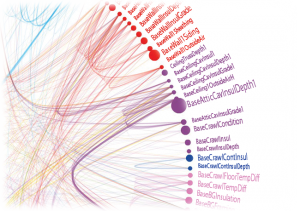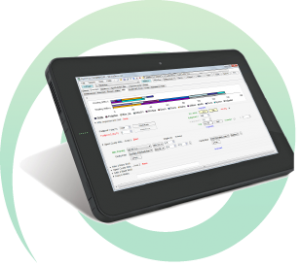
Contractors are finding a business case for using energy modeling software - even where utility and state incentive programs don't mandate it.
Myth 1: Modeling software takes a lot of time to use.
Many contractors contact us thinking they would like a tool that would generate a sales report and estimate savings from energy efficiency measures but that using modeling software means adding time to an already high-cost, low-margin process. What is often misunderstood, is that modern audit software integrates with your assessment and sales process, replacing other data entry, report preparation, and document handling time and streamlining your workflow.
The best complaint we've heard was from a contractor who said, "We have a person in the office whose only job is taking audit data and compiling it into a sales report. OptiMiser does that automatically, lets us tap into program incentives, and keeps all the information organized. If I used OptiMiser, I'd probably have to let my office person go, and I don't want to do that!" If that's your reason for not using software, you can stop reading.
Myth 2: Modeling software is not accurate.
This story about savings estimates versus realized savings gets complicated. There are a lot of different types of audits and ways to predict savings, and different reasons for presenting them. The bottom line is OptiMiser audit software is consistently accurate across a wide variety of audit types. And with real-time modeling and advanced bill calibration, OptiMiser adds transparency and comprehensibility to the assessment process.
If you haven't tried audit software in a few years, you will be surprised at how easy and effective it can be to use. OptiMiser has made significant advances in how information - observations, current and typical climate data, utility bills, default housing characteristics and occupant behavior - gets entered and applied, making the process much more accurate, consistent, and fast. For example, model "true-up" is a thing of the past; OptiMiser uses intelligent auto-calibration to achieve models that best fit historical usage without the user doing any manual knob-turning.
Whether you are doing a quick assessment without diagnostics or a full audit, and with or without historical usage, OptiMiser leverages the information you provide along with detailed local climate and housing characteristic databases to provide the best models of existing usage and estimates of savings. Plus, you get visibility into the modeling process to give you confidence in your results.
Myth 3: Modeling software is hard to learn, and training is expensive.
Don't get us wrong; modeling software is a professional tool. Proficiency in using it does not come instantly. But neither is it painful, unreasonably time-consuming, or expensive. OptiMiser's model of collaborative, self-paced training and dedicated support team let you step up your audit software game efficiently and for free.
Start with an introductory video or live training session (there's one free live session almost every week). Use the forums and in-tool help system (tooltips on most controls and help text for every screen). If you get stuck or get an unexpected result, the built-in issue reporting system put you in touch with a developer quickly, with all the necessary information automatically conveyed.
For larger teams, private web-based trainings are also available.
Myth 4: Clients don't care about the information that comes out of modeling software.
Many energy efficiency retrofits are sold on the basis of comfort, with little emphasis on savings. Contractor-focused audit software tools like OptiMiser recognize that, and provide myriad features to streamline data collection, reporting, and quality management that go beyond estimating energy savings.
With OptiMiser, all your audit and proposal data is in one place. The Bid tool lets you easily create proposals exactly the way you want them. Built-in diagnostic assistants like ASHRAE ventilation standards and BPI combustion testing action levels help you navigate health and safety issues.
And your custom sales report can be generated consistently with no double data-entry. The built-in reports are great, too (in fact, there's a whole new report style on the way that focuses on addressing homeowner concerns without technical jargon).
That being said, energy savings information, when it's accurate and well-presented, can make a significant difference in a client presentation. Showing how savings information was derived, and how payback from various measure packages compare, can go a long way towards building trust with a potential client. It shows they were right to consult a professional; building performance is complicated, but you've brought to bear the professional tools and skills needed to make the choices simpler.
And, of course, if the measures you've proposed will save your clients money over a reasonable time frame, that's something they are always eager to hear.
Myth 5: If the software doesn't fit my needs exactly, I should do without it.
Actually, this is sort of true. You should get exactly the functionality you want from software. The mythical part is that the software tools you see demonstrated in videos or experience in a free trial are all there is. We all come to think of software as similar to other products in that you get what you see - who do you call if you want a new feature or interface design in Microsoft Word, right?
But software doesn't have to be like that. Big companies get exactly the software they need. They have internal resources and contractors who take off the shelf components and tailor and combine them to achieve the right interface and the right functionality. At OptiMiser, we've developed a platform that makes it cost-effective for everyone to get this level of customization.
We build reports, analytics, integrations with other tools, even entirely new interfaces, all in hours and days, not months and years.
So, if you're not seeing the audit software that meets your business needs, let us know. We're here to help.



